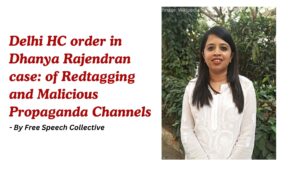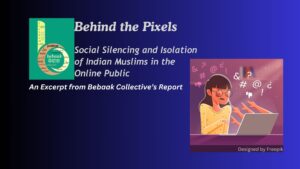
With literally no serious debate and a deafening silence on important issues, why is media coverage so dismal, asks Kajal Iyer.
This past week, three important new criminal laws sailed through the Lok Sabha with nary a concern. A few days before, an attack took place in the Parliament and opposition leaders were suspended for demanding a statement on the status of the investigation. While the ruckus and suspension commanded some public interest but more importantly, the three criminal laws are going to impact every citizen for the next many years. Yet, the coverage on these has been dismal.
Television was mostly busy with an act of mimicry of the Vice President and in promoting the government line that the opposition was creating trouble and deserved to be suspended. The fact that other than the names of the alleged smoke bomb protestors of the parliament, little is known about either the motive or the modus operandi of the security breach has found little space on either television or print. This is not to say no one has covered it, but it was not as widespread as it should have been.
But, while this is not a new phenomenon today, it wasn’t always the case.
2008 was a busy year for television reporters of the national capital in India. On the one hand was the breathless coverage of the sensational Aarushi murder case. And on the other was the 123 Nuclear Agreement. Those of a certain vintage would remember that while the Aarushi case hogged a lot of air time and print, the sensationalism did not overpower the importance of the Nuclear deal.
A pact that was between two countries and did not have much of an immediate impact on majority of citizens was discussed threadbare on channels and many editorials and explanatory articles were written on the same in the dailies. There was little social media back then, but still the Nuclear deal was something everyone back then had some knowledge of and would speak about even if in generic terms of how we shouldn’t let America dictate terms to our country.
Far reaching impact of criminal laws…but where’s the analysis?
The three criminal laws will have far reaching impact on how justice is delivered in this country. A few publications did small analytical pieces when the first drafts were made public. Some sections, for instance, the section on mob lynching, which got some coverage, and rightfully so. A few opinion pieces have been published in print media on the possible rolling back of hard won police reforms due to the changes in arrest and remand norms in the new law.
A few anchors did call in lawyers and intellectuals to analyse the laws, but these shows are few and far in between. What has found more air time and print space is random proclamations of politicians of the ruling alliance than the actual meaning of the sections. For example most publications and television media reported Home Minister Amit Shah’s statement that the sedition law has been scrapped. What was not reported by most is that the new section that has replaced it, have some more stringent measures.
The day after the law was passed in the Lok Sabha, many publications led with the Home Minister’s comment about judicial delays and put out a plain copy saying the laws had been passed.
Poor Reportage on Law Making
In the past few years, reportage on law making has sharply declined. Television has been compromised for some time but what is appalling is that even print has not done extensive pieces on many laws of late. Parliament session reportage has become more about outrageous statements and allegations of the MPs rather than about the entire process of debate, discussion and analysis of proposed laws.
Some people lament that it is because there are very few erudite reporters anymore. But I beg to differ. As someone who was part of the television media for a long time, I see that some of the same people who reported very differently in the UPA years now seem content to be silent about meaningful issues.
Newsroom leaders tend to discredit the ones who persist in taking a serious and scholarly approach to reportage. Too many things are classified as taboo or too boring or too technical and over time, reporters and desk hands have started self censoring.
It is also not correct to blame the audience here because those who wish to watch seem to be regularly tuning into YouTube channels that run explainer videos.
Alternative, independent media fills the gap
Increasingly it is alternative media that has been serving the public’s need for in-depth understanding of issues, however a significant portion of these social media channels too have their own biases. Channels and newspapers lament no one reads or watches them because of social media and at times even deride those who quit mainstream organisations and decided to become social media journalists.
But the question to be asked is, would social media have captured this space, had mainstream media not ceded it? Had the media moguls stood firm and together on what they know to be the objective truth, would we have come to this impasse?
The result has been that we now have an electorate high on emotion and rhetoric and low on understanding of democratic processes. Political coverage has become like a non-stop Big Boss House with sledging and taunts replacing nuanced analysis.
Those who choose not to do this are choosing to play safe with a vanilla variety of coverage. The three criminal laws deserved extensive, wall to wall coverage, not just mentions, small pieces and social media analysis by experts. In the past, such laws would have been debated extensively in the run up to and throughout the winter session.
But the media has been complicit in ceding space and handing over not just its own but also people’s freedoms to be controlled at will.
Kajal Iyer is a law graduate who worked for 15 years in television media. She is based in Mumbai.


